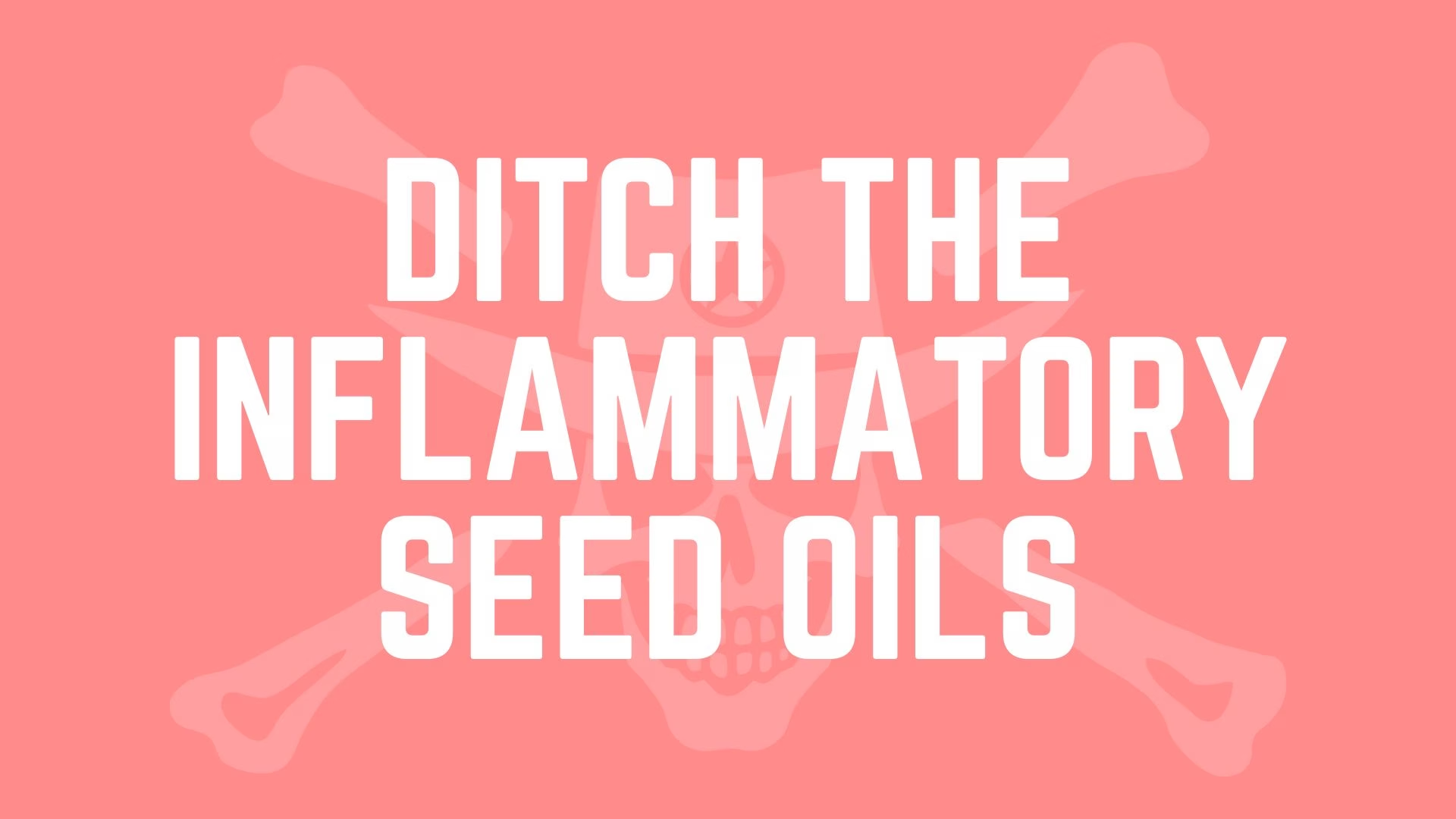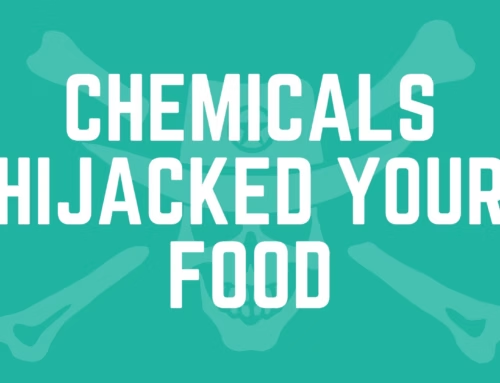Why Seed Oils Fuel Inflammation—and What to Use Instead
The Hidden Danger of Seed Oils
Many of our favorite convenience foods—crispy fries, chips, and baked goods—depend on refined seed oils (soybean, corn, sunflower, canola, cottonseed). These oils are extracted at industrial scale using high heat and solvents, then stripped of natural antioxidants like vitamin E and phytosterols. The result is a cheap, flavor-neutral fat that oxidizes easily, flooding your body with pro-inflammatory molecules every time you cook or eat.
Over time, this invisible source of inflammation contributes to joint stiffness, impaired recovery after exercise, metabolic disturbances, and heightened disease risk.
Why High Omega-6 Content Matters
Think of your cell membranes as floating rafts in a lipid sea. The more omega-6 you pour into that sea—via seed oils—the more your rafts become rigid, unstable, and prone to sending “danger” signals to your immune system.
- Evolution vs. Modern Diet: Anthropological studies estimate our ancestors ate omega-6:omega-3 ratios near 1:1. Today’s Western diet, fueled by seed oils, skews as high as 20:1, supercharging pro-inflammatory pathways.
- Arachidonic-Acid Surge: Seed oils are 50–75% linoleic acid (LA). Enzymes convert excess LA into arachidonic acid, the raw material for prostaglandins and leukotrienes—molecules that ramp up pain, swelling, and immune cell recruitment.
- Genetic Switch: A 2015 feeding trial showed reducing omega-6 intake from 15% to 4% of calories dropped NF-κB activation in immune cells by 35%, directly lowering TNF-α and IL-6 production.
Oxidation & “Bad Fats” Under Heat
Heating seed oils is like firing a flare inside your body—you generate reactive chemicals that hurt every cell:
- Lipid Peroxides & Aldehydes: At frying temperatures (350–400°F), PUFAs oxidize into 4-hydroxynonenal (4-HNE) and malondialdehyde (MDA). These aldehydes bind to proteins and DNA, triggering oxidative stress and inflammatory gene expression.
- Cellular Sabotage: In cell-culture studies, 4-HNE exposure increased mitochondrial ROS (reactive oxygen species) by 60%, causing immune cells to release more IL-1β and IL-18.
- Restaurant Reality: Analysis of used fryer oil in commercial kitchens found peroxide levels 3× higher than safety thresholds—and diners unknowingly consume these harmful compounds with each bite of fries or fried chicken.
Long-Term Health Consequences
Chronic seed-oil consumption doesn’t just spike your CRP for a meal—it rewires your long-term disease risk:
- Heart Disease: A 10-year cohort study of 40,000 adults linked each 5% increase in calories from seed oils to a 12% higher risk of coronary events, independent of other fats and lifestyle factors.
- Type 2 Diabetes: Over 8,000 participants followed for 15 years showed those with the highest omega-6:3 ratios had a 30% greater incidence of insulin resistance and diabetes.
- Cancer Progression: In animal models, diets rich in oxidized seed-oil aldehydes accelerated tumor growth rates by 25–40%. Human data correlate high linoleic-acid biomarkers with increased breast and colorectal cancer risk.
- Neuroinflammation: Brain tissue in aged mice fed a seed-oil diet exhibited 50% higher microglial activation—linked to cognitive decline. Human imaging studies tie high plasma MDA to faster rates of memory loss.
Oxidation: Inflammation’s Secret Catalyst
Heating seed oils is like firing a flare inside your body—you generate reactive chemicals that hurt every cell:
- Lipid Peroxides & Aldehydes: At frying temperatures (350–400°F), PUFAs oxidize into 4-hydroxynonenal (4-HNE) and malondialdehyde (MDA). These aldehydes bind to proteins and DNA, triggering oxidative stress and inflammatory gene expression.
- Cellular Sabotage: In cell-culture studies, 4-HNE exposure increased mitochondrial ROS (reactive oxygen species) by 60%, causing immune cells to release more IL-1β and IL-18.
- Restaurant Reality: Analysis of used fryer oil in commercial kitchens found peroxide levels 3× higher than safety thresholds—and diners unknowingly consume these harmful compounds with each bite of fries or fried chicken.
Long-Term Health Consequences
Chronic seed-oil consumption rewires your disease risk, far beyond a single meal:
- Heart Disease: A 10-year cohort of 40,000 adults found each 5% increase in calories from seed oils was linked to a 12% higher risk of coronary events, independent of other dietary factors.
- Type 2 Diabetes: In an 8,000-person, 15-year follow-up, participants with the highest omega-6:3 ratios had a 30% greater incidence of insulin resistance and diabetes.
- Cancer Progression: Animal models fed oxidized‐oil diets experienced 25–40% faster tumor growth. Human studies correlate high blood linoleic-acid levels with a 30% increased risk of colorectal and breast cancers.
- Neuroinflammation: Aged mice on seed-oil diets exhibited 50% more microglial activation—linked to cognitive decline. In humans, elevated plasma MDA associates with faster memory loss.
Healthy Oil Swaps—Deep Dive
You don’t have to give up cooking with fats—just choose ones that resist oxidation and deliver anti-inflammatory benefits:
| Replace… | With… | Why It Works |
|---|---|---|
| Soybean, Corn, Cottonseed Oil | Extra Virgin Olive Oil | ~70% oleic acid stabilizes membranes; polyphenols (oleocanthal) inhibit COX enzymes, lowering CRP by ~15%. |
| Sunflower, Canola Oil | Avocado Oil | Balanced MUFA/PUFA; high smoke point (~520°F); phytosterols reduce LDL oxidation and support vascular health. |
| Any High-Heat Fry Oil | Ghee (Grass-Fed Butter) | Saturated MCTs resist peroxidation; butyrate supports gut-lining integrity; smoke point ~485°F. |
| All Refined Seed Oils | Virgin Coconut Oil | Medium-chain triglycerides bypass many oxidative pathways; lauric acid is antimicrobial and anti-inflammatory; smoke point ~350°F. |
Practical Cooking Tips
- Dressings & Marinades: Whisk EVOO with lemon, garlic, and herbs instead of store-bought vinaigrettes.
- Searing & Roasting: Use avocado oil or ghee; preheat pan fully before adding oil to minimize oxidation.
- Baking & Sauté: Swap ghee or coconut oil 1:1 for butter or shortening to maintain moisture and flavor.
- Storage: Store oils in dark glass bottles, away from light and heat; refrigerate EVOO and avocado oil after opening.
- Avoid Reuse: Dispose of frying oil after one use to prevent toxic byproduct buildup.
Related Deep Dives
FAQ
- Are all seed oils bad?
- Highly refined seed oils are the main issue. Cold-pressed, unrefined seed oils (e.g., pumpkin seed oil) retain some antioxidants but still carry high LA—use sparingly in dressings.
- Can I blend oils?
- Yes—blend up to 50% EVOO with 50% avocado oil for balanced flavor, smoke point, and anti-inflammatory profile. Avoid generic “vegetable oil” blends.
- How can I tell if oil is rancid?
- Look for darkening color, acrid or metallic smell, excessive foaming, or thick viscosity—these signal oxidation; discard immediately.
Conclusion
Seed oils have reshaped our food system—and our health—by delivering a constant stream of pro-inflammatory fats and toxic oxidation byproducts. But you can reclaim your well-being: swap in extra virgin olive oil, avocado oil, ghee, and coconut oil. Do it today and feel the difference in reduced inflammation, better joint comfort, and energy that powers every Jolly Outlaw adventure.
Disclaimer
This article is for educational purposes only and does not constitute medical advice. Always consult a qualified healthcare professional before making significant changes to your diet, supplements, or lifestyle, especially if you have pre-existing health conditions or are on medications.





